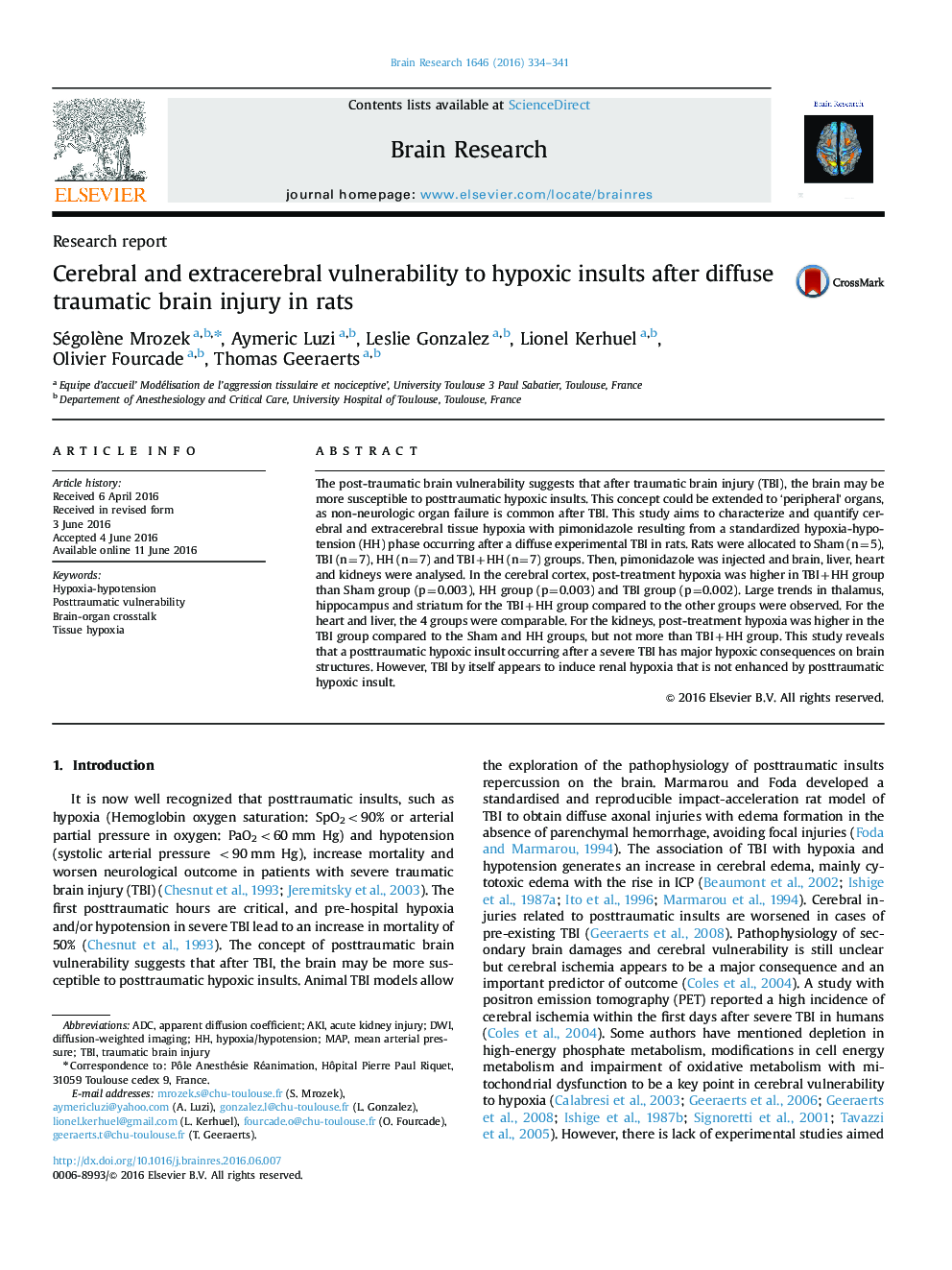| Article ID | Journal | Published Year | Pages | File Type |
|---|---|---|---|---|
| 6262396 | Brain Research | 2016 | 8 Pages |
â¢In rats, HH after a diffuse TBI increases hypoxia injuries in the cerebral cortex.â¢It tends to increase hypoxia injuries in the thalamus, hippocampus and striatum.â¢No significant hypoxic consequences were reported for the heart and the liver.â¢TBI by itself appears to induce renal hypoxia.
The post-traumatic brain vulnerability suggests that after traumatic brain injury (TBI), the brain may be more susceptible to posttraumatic hypoxic insults. This concept could be extended to 'peripheral' organs, as non-neurologic organ failure is common after TBI. This study aims to characterize and quantify cerebral and extracerebral tissue hypoxia with pimonidazole resulting from a standardized hypoxia-hypotension (HH) phase occurring after a diffuse experimental TBI in rats. Rats were allocated to Sham (n=5), TBI (n=7), HH (n=7) and TBI+HH (n=7) groups. Then, pimonidazole was injected and brain, liver, heart and kidneys were analysed. In the cerebral cortex, post-treatment hypoxia was higher in TBI+HH group than Sham group (p=0.003), HH group (p=0.003) and TBI group (p=0.002). Large trends in thalamus, hippocampus and striatum for the TBI+HH group compared to the other groups were observed. For the heart and liver, the 4 groups were comparable. For the kidneys, post-treatment hypoxia was higher in the TBI group compared to the Sham and HH groups, but not more than TBI+HH group. This study reveals that a posttraumatic hypoxic insult occurring after a severe TBI has major hypoxic consequences on brain structures. However, TBI by itself appears to induce renal hypoxia that is not enhanced by posttraumatic hypoxic insult.
